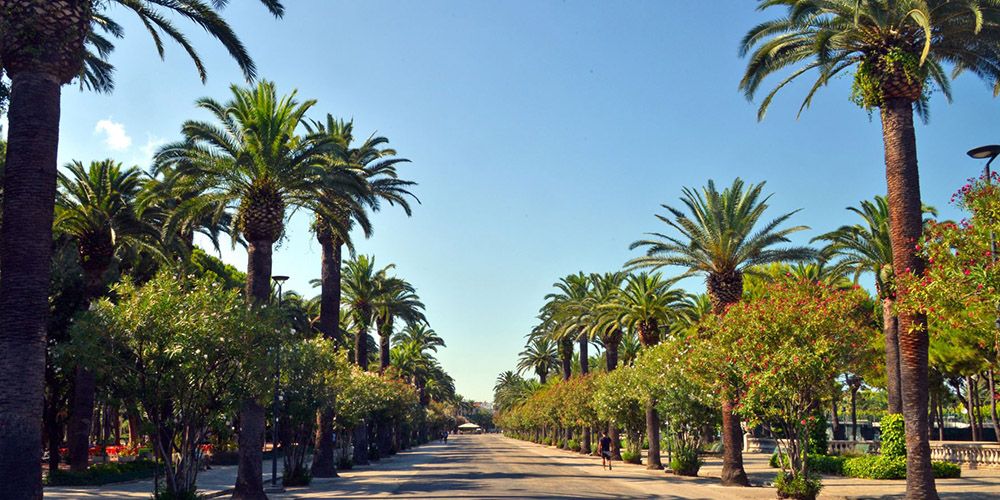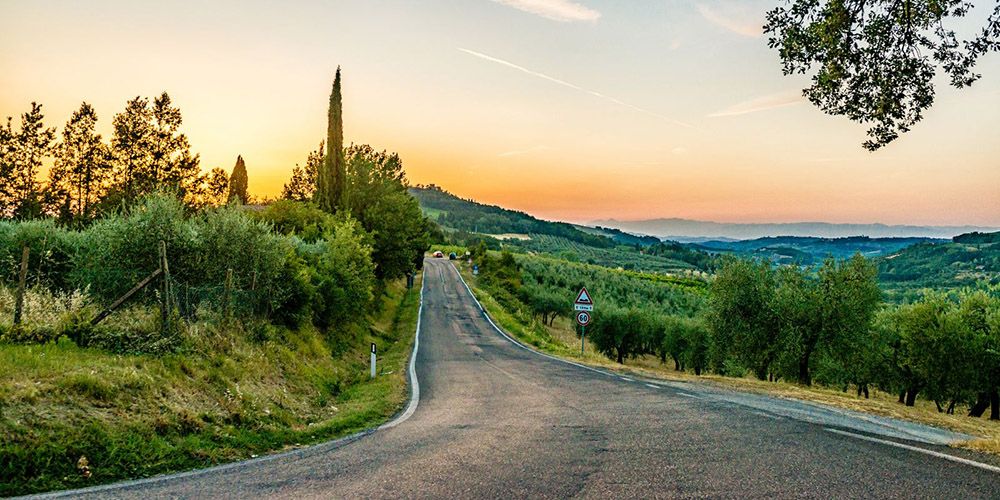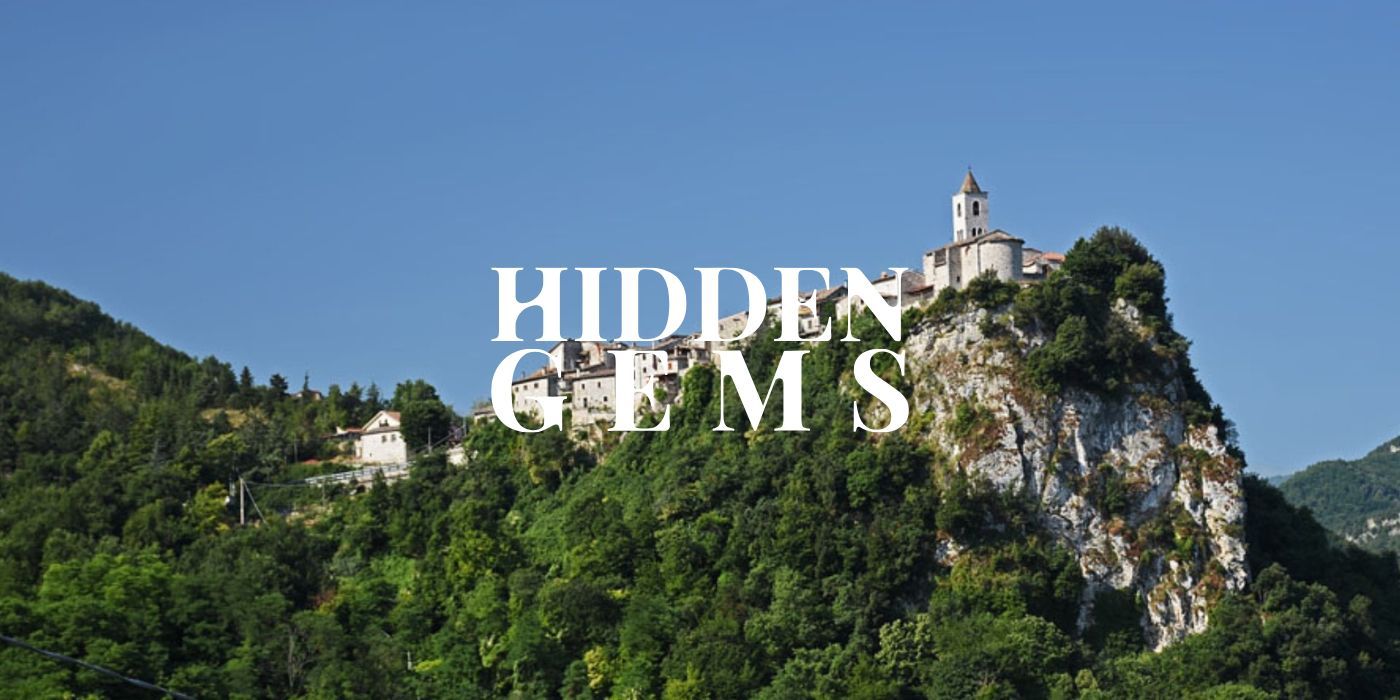As you look at the view of Castel Trosino from the banks of the Castellano torrent, you'll have a first hint of a secret magical place hidden in central Italy.
Once you reach the town, you'll see how the small village, a part of Ascoli Piceno, also presents itself as a true gem beyond the ancient round arch that has marked the entrance to this Middle Ages enclave for centuries.
As one might expect from a castle, Castel Trosino soars high and fairytale-like on a rocky spur. All around, a dense, lush forest hides a thousand-year-old treasure and a wild, wild nature.
Discover what to see in Castel Trosino in the surprising region of Marche a land of legends, waterfalls and knights.

Castel Trosino, a hidden gem in Ascoli Piceno
Leave your car outside the village and climb up an uphill road to reach the defensive walls that encircle Castel Trosino.
The historic centre is a tangle of alleys decorated with flowers and pretty stone houses delightfully framed by balconies (also flowering) and climbing plants.
The atmosphere is exquisitely antique, seasoned with silence and tranquillity that help recreate past moments in the here and now. Throw in a pinch of fantasy and imagination, and you'll almost feel like seeing King Manfred reconnoitring the village streets and a beautiful maiden observing him from a window.
According to a local legend, the sovereign had a fleeting love affair with the young inhabitant of what is now known as La Casa della Regina (Queen's House). Another version of the story tells that the dwelling was inhabited for a time by Manfred himself. That's why it's also known as Casa di Re Manfrì (King Manfredi's House).
Whatever you call it, the unavoidable fact remains: it's the most famous building in Castel Trosino. You recognise it by the three-light loggia framing the second floor and the wooden entrance door. The church of San Lorenzo Martire and a beautiful panoramic garden are a stone's throw away.
Castel Trosino is a small centre to tour in a few hours. In addition to visiting the village, it's worth exploring the surroundings (here you'll find lots of helpful information for planning your visit). There is plenty of historical and natural attractions that would be a shame to miss. Here are a few examples.
Listen to the podcast version of the article with Monna Lisa and Leonardo's voices
The waterfalls of Castel Trosino and the Casette Lake
The Lake Casette, an artificial body of water created by damming the Castellano torrent. A series of paths perfect for walks or mountain biking crisscross the surrounding park. A bicycle and pedestrian trail leads from the lake to the sulphurous water springs exploited since Roman times for their recognised therapeutic properties.
Another unmissable stop, the waterfalls of Castel Trosino are a must when visiting the medieval village. If you are travelling in summer, you'll find this destination particularly pleasant, as you can cool off by bathing in the clear (and icy) waters of the spring in an enchanting natural setting. The best way to reach the waterfalls is to walk from the village but notice that the route may not be well signposted.
Speaking of waterfalls. Not far from Castel Trosino, there is a perfect place to take magnificent photos, a small corner of Middle-earth hidden in the vegetation: the Tasso Bridge, a suspended walkway dating back to medieval times. Below, a charming little waterfall cascades into the emerald green of the Castellano. It takes a strenuous trek to get there, but the effort is rewarded by one of the most memorable and fascinating views in Le Marche.
Castel Trosino: the Longobard necropolis
Castel Trosino is home to the largest Longobard necropolis in Italy. A treasure of antiquity found by chance in the 19th century. 'By chance' because a priest and a farmer discovered it while working at a vineyard in the Castel Trosino area. The excavations would unearth the 260 tombs of the archaeological site (with their grave goods, weapons, jewellery and various gold and silver artefacts).
Much of the treasure that emerged, relics of immense historical value, is now part of the museums of the Early Middle Ages in Rome and Ascoli Piceno.
The necropolis is only about ten minutes from the castle, following a path through the woods. The route is not particularly demanding, apart from a short section on a steep slope. An alternative but unmarked trail will still allow you to get around the obstacle: ask a local for advice.
Once at your destination, you'll be received by a special welcoming committee. The life-size statues of four soldiers and a woman portrayed in solemn features and movements reproduce an ostentatious and scenic Longobard funeral ceremony.
The unusual scene marks the beginning of the site, which unfolds amidst the dense and lush vegetation cloaked in an almost mystical and, in some ways, surreal atmosphere.
One of the most touching attractions is undoubtedly a crypt whose glass roof allows a glimpse of the host still inside. The bones and the grave goods in the tomb are there as an extraordinary testimony to the solemnity of the place and its historical and human significance.
What to do around Castel Trosino

If you are a fan of hiking and trekking around Castel Trosino you will have the opportunity to experience splendid walks that will take you to enchanting places, in addition to the Lago di Casette and the waterfalls of Castel Trosino that we have already told you about, another nearby and very suggestive destination is Colle San Marco where there is a silent and ancient hermitage. It is a former Cistercian monastery considered among the most spectacular in Italy that blends in perfectly with the rock on which it was built, you will undoubtedly be fascinated by it. If you are looking for adventurous trails and natural itineraries in the Marche you will find the destination for you.
If instead you are passionate about cities of art, a destination that you cannot miss nearby is Ascoli Piceno, the entire historic center is built in travertine blocks, here you will find churches, towers, palaces and squares of enchanting beauty, such as Piazza del Popolo, the central square of the city that is a true Renaissance lounge and where you can stop to enjoy a coffee while admiring the landscape. If you want to relax and take a dip in the sea during the summer season, then the highly recommended destination is the Riviera delle Palme, the splendid town of San Benedetto del Tronto, just a half hour drive away towards the coast. If you visit at other times of the year it will still be worthy of attraction for its historic center and its monuments and a walk towards the long pier that leads to a monument dedicated to the legendary Jonathan Seagull by Richard Bach. You will see the Marche region will surprise you, discover also what to visit in the Marche in 7 days.
How to get to Castel Trosino

Castel Trosino is located in the province of Ascoli Piceno, to reach it you have different options depending on your preferences. The first option is definitely the car for various reasons, the first is that the Marche region is surrounded by various mountains and with the train the travel times become very long, furthermore the use of the car will allow you to tour the rest of the region allowing you to stop wherever you like. To get to Castel Trosino by car the best option is to take the Strada Provinciale di Valle Castellana that comes from Ascoli Piceno; Ascoli Piceno can be reached via the A14 highway (Adriatica) and the highway junction 11 (RA11).
If instead you want to use the train, you should know that the closest train station is Ascoli Piceno, from there you will have to take a bus to Castel Trosino, for buses and coaches it is always better to check the timetables and stops in advance. If you are a trekking enthusiast you might like to experience a bit of adventure through the use of some public transport (train and bus) and taking advantage of the many hiking trails that cross the area. Enjoy your trip!
About the author
Written on 23/12/2022



Lorena Calise
Discovering Castel Trosino. This small medieval village of Ascoli Piceno is full of treasures. Here is what you need to know.